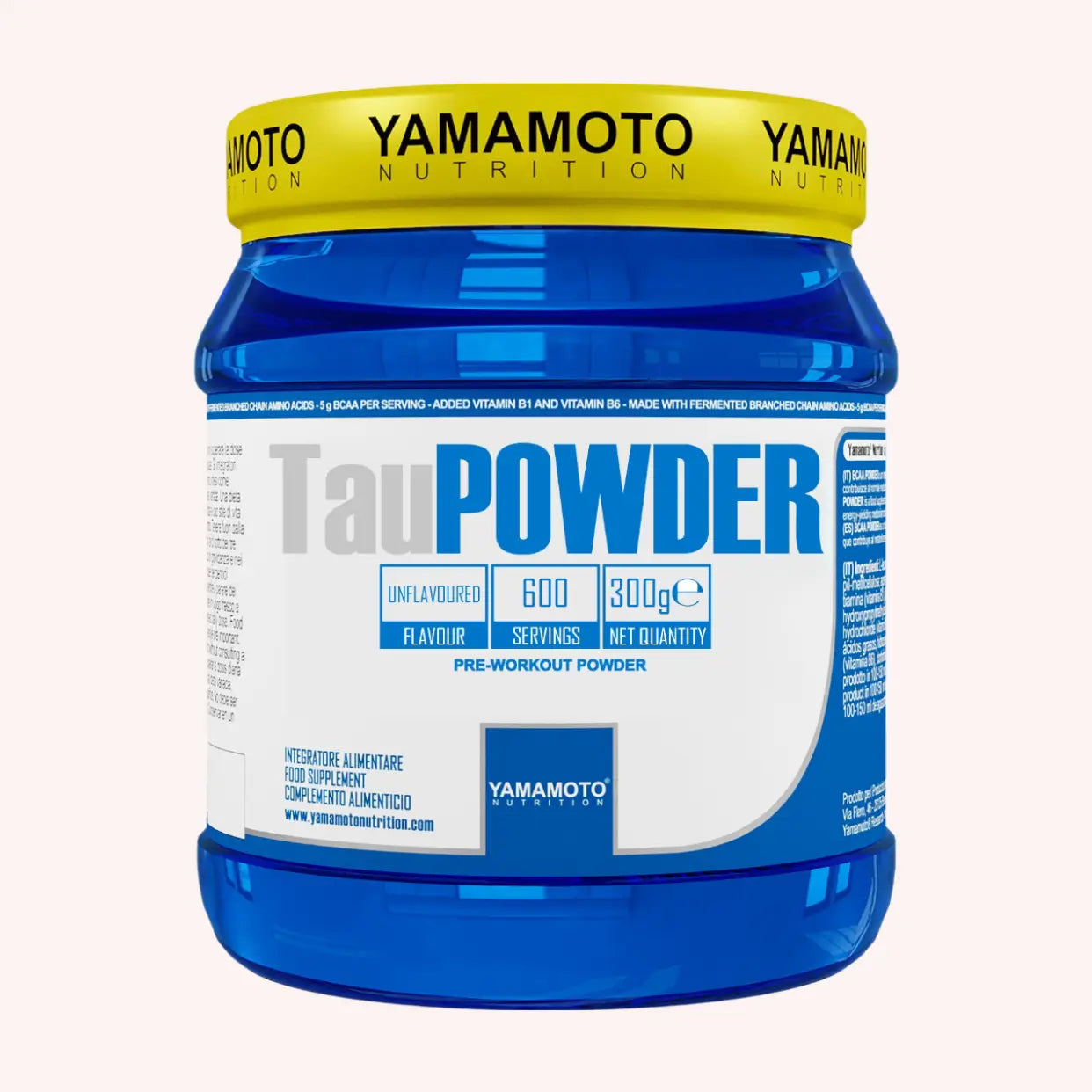Taurine is an amino acid often associated with energy drinks and sports nutrition. Although often misunderstood, it is a beneficial substance for athletes looking to improve their physical performance.
Here, we will explore in detail the benefits of taurine , its dietary sources, and its role in improving your athletic performance.
What is taurine?
Taurine is a sulfur-containing amino acid derivative, naturally produced by the body from cysteine. It is present in large amounts in various tissues of the body, including the brain, retina, skeletal muscle, and heart.
Unlike traditional amino acids, taurine does not participate in the construction of proteins, but nevertheless plays a central role in many physiological processes.
The role of taurine in the body
Taurine contributes to many fundamental biological functions:
- Regulation of cell volume: It helps maintain water balance within cells.
- Formation of bile salts: It facilitates the digestion of fats.
- Regulation of intracellular calcium: It stabilizes the concentration of calcium, essential for proper muscle functioning.
- Neurological protection: It provides protection for nerve cells and can help improve cognitive function.
The benefits of taurine for athletes
Improved physical performance
Taurine is recognized for its potential to improve athletic performance. It works by increasing endurance and reducing muscle fatigue.
A study of runners showed a 1.7% improvement in race time after taking taurine. This suggests that taurine helps athletes extend their efforts and improve their results.
Recovery after exercise
Taurine promotes recovery after exercise by reducing muscle damage and facilitating tissue repair.
It acts as an antioxidant, helping to neutralize free radicals produced during intense exercise. This action reduces oxidative stress and limits muscle soreness and cramps.
Reduction of oxidative stress
Oxidative stress is a key factor in muscle fatigue and damage. Taurine has antioxidant properties that help protect muscle cells from free radical damage.
By reducing oxidative stress , taurine allows athletes to maintain high performance levels for longer.
Improved vascularization
Taurine improves blood circulation by increasing the production of nitric oxide, a natural vasodilator. This promotes better oxygenation of the muscles and improves the efficiency of heart contractions.
Better blood circulation also means faster removal of metabolic waste produced during exercise, leading to faster recovery.
Food sources of taurine
Taurine is naturally present in various foods, mainly of animal origin :
- Fish and Seafood: Fish such as salmon and mackerel, as well as seafood such as shrimp and oysters, are rich in taurine.
- Meats: Red meats like beef and lamb, as well as poultry like chicken and turkey, contain significant amounts of taurine.
- Dairy products: Milk and cheese are also sources of taurine.
- Dietary Supplements: For those with increased needs or restrictive diets, a taurine sports dietary supplement is easily found in capsule or powder form.
Taurine supplementation
For athletes, taurine supplementation offers significant benefits. Studies have shown that doses of 1,000 to 3,000 mg per day are effective in improving performance and promoting recovery.
It is important to follow dosage recommendations and consult a healthcare professional before starting any supplementation.
Dosage and supplementation
Dosage and precautions
The optimal dosage of taurine depends on your specific goals:
- Improved athletic performance: Between 1,000 and 3,000 mg per day.
- Recovery support: Up to 3,000 mg per day, divided into several doses.
- Antioxidant and cell protection: Approximately 1,000 mg per day.
Precautions and side effects
Taurine is generally well tolerated, with few reported side effects. However, as with any supplement, it is essential to follow the recommended dosages.
Possible side effects include minor gastrointestinal disturbances, which usually resolve with dose adjustment.
We recommend consulting a healthcare professional before starting taurine supplementation, especially if you have pre-existing medical conditions.
Taurine is a rich supplement for athletes looking to improve their performance and optimize their recovery. Its antioxidant properties, its ability to reduce oxidative stress, and its ability to improve vascularization make taurine an ideal ally for athletes.
By incorporating dietary sources of taurine into your diet or considering appropriate supplementation, you will benefit from its many advantages to achieve your sporting goals.
Sources:
- Miyazaki T, Honda A, Ikegami T, Matsuzaki Y. "The role of taurine on skeletal muscle cell differentiation." Adv Exp Med Biol. 2013;776:321-8. doi:10.1007/978-1-4614-6093-0_29. : https://www.semanticscholar.org/paper/The-role-of-taurine-on-skeletal-muscle-cell-Miyazaki-Honda/370b89105b946bc782af4e7e25e64f056df234b4
- Schaffer S, Kim HW. “Effects and Mechanisms of Taurine as a Therapeutic Agent.” Biomol Ther (Seoul). 2018;26(3):225-241. doi:10.4062/biomolther.2017.251. : https://pubmed.ncbi.nlm.nih.gov/29631391/
- Ripps H, Shen W. "Review: Taurine: a 'very essential' amino acid." Mol Vis. 2012;18:2673-2686. : https://pubmed.ncbi.nlm.nih.gov/23170060/
- Warnock R, Jeffries O, Patterson S, Waldron M. "The Effects of Caffeine, Taurine, or Caffeine-Taurine Coingestion on Repeat-Sprint Cycling Performance and Physiological Responses." Int J Sports Physiol Perform. 2016;12(10):1341-1347. : https://pubmed.ncbi.nlm.nih.gov/28338362/
- Waldron M, Patterson SD, Tallent J, et al. “The Effects of an Oral Taurine Dose and Supplementation Period on Endurance Exercise Performance in Humans: A Meta-Analysis.” Sports Med. 2018;48:1247. : https://pubmed.ncbi.nlm.nih.gov/29546641/
- Goodman CA, Horvath D, Stathis C, et al. "Taurine supplementation increases skeletal muscle force production and protects muscle function during and after high-frequency in vitro stimulation." J Appl Physiol (1985). 2009;107(1):144-154. : https://pubmed.ncbi.nlm.nih.gov/19423840/
- McLeay Y, Stannard S, Barnes M. “The Effect of Taurine on the Recovery from Eccentric Exercise-Induced Muscle Damage in Males.” Antioxidants (Basel). 2017;6(4):79. doi:10.3390/antiox6040079. : https://pubmed.ncbi.nlm.nih.gov/29039798/
- Spriet LL, Whitfield J. “Taurine and skeletal muscle function.” Curr Opin Clin Nutr Metab Care. 2015 Jan;18(1):96-101. doi: 10.1097/MCO.0000000000000135. : https://pubmed.ncbi.nlm.nih.gov/25415270/
- Schaffer SW, Jong CJ, KC R, Azuma J. “Physiological roles of taurine in heart and muscle.” J Biomed Sci. 2010 .: https://pubmed.ncbi.nlm.nih.gov/20804594/
- Singh P, Gollapalli K, Mangiola S, et al. “Taurine deficiency as a driver of aging.” Science. 2023;380(6649):587-589. doi:10.1126/science.abm6765. : https://pubmed.ncbi.nlm.nih.gov/37289866/








